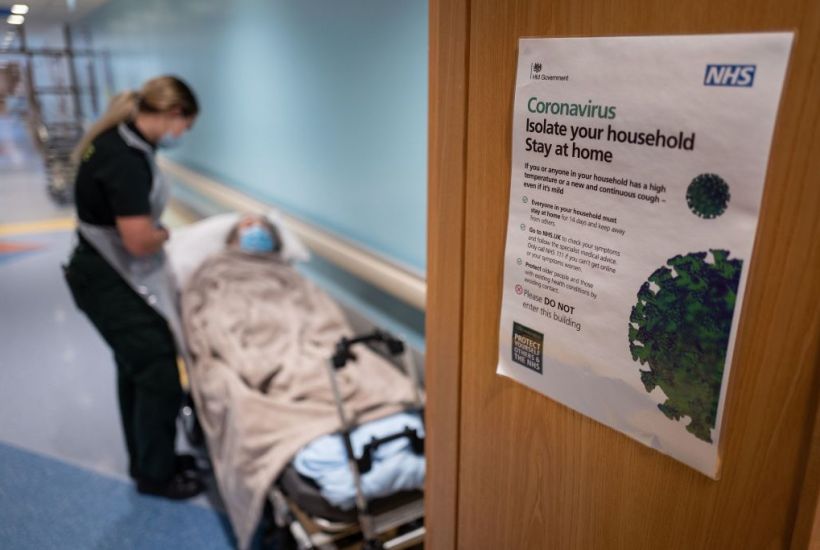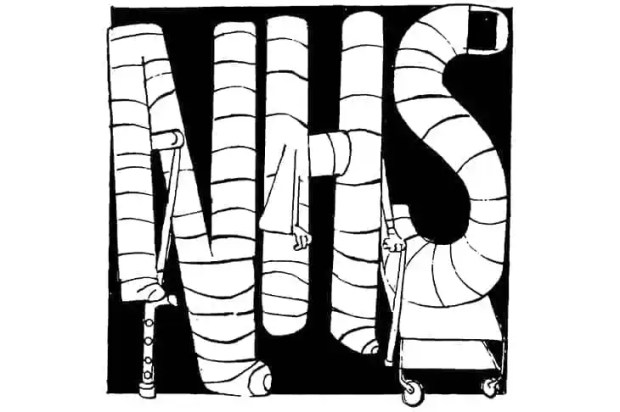I am hearing stories about people with disabilities that make me feel ill. Visitors to care homes (parents and siblings, usually) tell me they cannot go inside. Fair enough, given the risks of coronavirus spreading you might say. But some homes are not allowing parents to wave at their children through the window or meet them at a safe social distance when they are released from lockdowns lasting 23 hours a day for a brief walk, assuming they are allowed a walk at all.
Severely autistic people, who understand little, think their parents are dead or have abandoned them. They are injuring themselves and falling into deep depressions. My sources won’t go on the record. But Harriet Harman, the chair of the Parliamentary Committee on Human Rights talked this week of the ‘great suffering’ of those being locked in solitary confinement, alone and vulnerable to abuse. The committee wanted to know whether homes were using restraints and lockdown to contain them, although how it will find out is anyone’s guess. The Care Quality Commission has suspended routine inspections, so homes are zones beyond the scrutiny of families and the democratic state. One mother told the committee her daughter was being physically restrained and locked in her room every day. She was banging her head, smashing her knuckles and ‘self-harming in the extreme’.
After 11,600 deaths and shocking incompetence on the part of the government and the NHS, we are at least talking about old people’s homes. Their staff are at least being promised tests and protective equipment, even if Johnson’s promises are not a currency any sane care home manager would bank. Of the fate of younger people with crushing disabilities, we hear next to nothing.
On 6 May, Rebecca Thomas of the Health Service Journal showed that was just the way the authorities wanted it. She reported that NHS England had said that it would not stir itself to publish details of suspected and confirmed deaths of people with learning disabilities and autism from Covid-19 until 2021. Under pressure from Labour’s Liz Kendall and mental health charities, NHS England retreated. On 15 May, it announced that Covid-19 death rates among people with learning disabilities and autism in hospital were broadly in line with deaths in the rest of the population. Every death is a tragedy and all of that, but how reassuring to learn there is nothing to worry about.
The NHS figures did not ring true, nor did the subsequent updates. Mark Neary, father of Steven Neary, who won a landmark case which stopped a local authority illegally holding his son, and campaigners for open justice and disability rights, have raised funds to challenge NHS England in the courts. The trouble with the information the NHS offers, they say, is that it leaves out deaths in care homes, supported living, and individuals’ own homes. And the problems do not end there.
Professor Chris Hatton of Lancaster university laid out the questions the apparently comforting statement from the National Health Service left unanswered. Information about the health of patients is either hidden or, many suspect, not collected at all. Without comparable figures from previous years, we don’t know how many more people with learning disabilities have died from any cause during the pandemic so far. There was no way for outsiders to calculate ‘excess deaths’, to use the new and grimly fashionable language.
We do know, however, that people with autism and learning disabilities in England are likely to die young. So great is the health inequality that the NHS estimated before the pandemic that they were four-times as likely to die as contemporaries of the same age and sex were. They were already suffering ‘excess deaths’ before the virus arrived. They have a higher rate of respiratory conditions, for example, and higher rates of obesity. As far as we know, obesity hugely increases the risks of dying from the virus, so one would expect them to suffer more. Indeed, in 2018/19 at least 41 per cent of people with a learning disability who died, died as a result of a respiratory condition. In other words, and I am being as polite as I can be here, the NHS claim that ‘covid-19 deaths in hospital of people with a learning disability is broadly in line with the rest of the population’ feels ridiculous.
Until the authorities not only tell us about deaths outside hospitals, but provide comparable information on the number of deaths of people with autism and learning disabilities in previous years, no one can say whether Covid-19 has added excess deaths to the already excessive death rate. And until it gives the ages of the dead, we will not know if disproportionate numbers of younger people with learning difficulties are dying.
Prof Hatton added a second reason to doubt the warm official words. The NHS says the percentage of hospital deaths is similar to the proportion of people with learning disabilities and autistic people in the population generally. But he points out that ‘three-quarters of adults with learning disabilities aren’t known as such to health or social care services, and even less is known about autistic people’.
And therein lies the problem. Everything we know about health inequalities suggests that people with autism and learning disabilities will have been hit hard by Covid-19. Yet the NHS is not releasing enough information to make a judgement. This may well be, as I said before, because it has not bothered to collect it in the first place, as the professor says. It’s not a competition in some kind of misery Olympics, but there have been belated but still serious debates on coronavirus and ethnic minorities and, obviously, on coronavirus and the old but next to no debate on highly vulnerable people with dreadful disabilities.
If there is a second spike, they will be hit again. The cause of death won’t be hard for coroners to ascertain: official indifference.
Got something to add? Join the discussion and comment below.
Get 10 issues for just $10
Subscribe to The Spectator Australia today for the next 10 magazine issues, plus full online access, for just $10.





















Comments
Don't miss out
Join the conversation with other Spectator Australia readers. Subscribe to leave a comment.
SUBSCRIBEAlready a subscriber? Log in